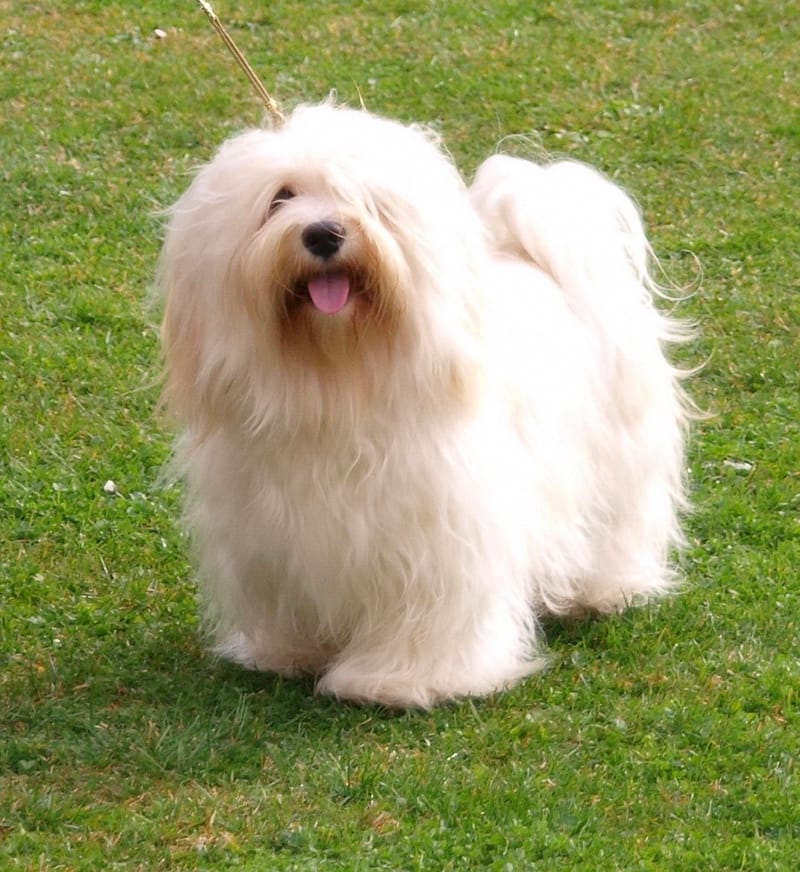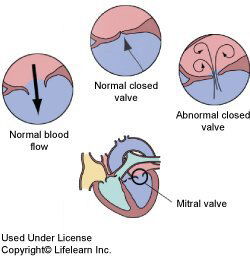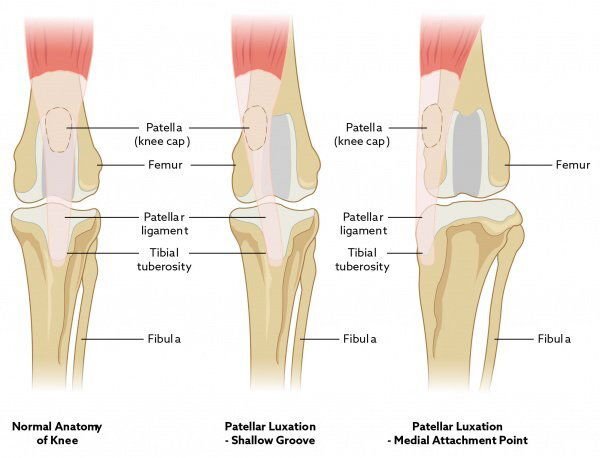Health

As a breeder, Ellingly Havanese is very proactive in our stance towards limiting the proliferation of health issues within our breed. You can help us in this effort by becoming an informed consumer and insisting on only purchasing your Havanese puppy from a breeder who health tests. Please support the best possible future for the Havanese breed!
If you're buying a puppy, find a good breeder who will show you health certificates for both your puppy's parents.
A reputable breeder will be honest and open about health problems in the breed and the incidence with which they occur in her lines.
Careful breeders screen their breeding dogs for genetic disease and breed only the healthiest and best-looking specimens, but sometimes Mother Nature has other ideas and a puppy develops one of these diseases despite good breeding practices.
Havanese Health
In general, Havanese are a healthy breed with a life expectancy of 12 to 15 years or more.
The vast majority of Havanese go through life with no major health issues. This is due to diligent health testing by reputable breeders who take seriously their role as stewards and guardians of the breed. We take the time and go to the expense of testing our breeding dogs against known heritable health problems.
Be sure to have your own canine veterinarian examine your new puppy within 48 hours of pickup.
To protect yourself from the expensive vet bills associated with these conditions, you'll want to purchase pet insurance for your Havanese before they show symptoms or are diagnosed.
Potential Health Issues
Havanese are an extremely healthy breed, and the people devoted to them want to keep it that way. Havanese like all breeds, they're prone to certain health conditions.
Not all Havanese will get any or all of these diseases, but it's important to be aware of them if you're considering this breed.
Dental Disease
| Dental Disease is the most common chronic problem in pets, affecting 80% of all dogs by age two. It starts with tartar build-up on the teeth and progresses to infection of the gums and roots of the teeth. If we don’t prevent or treat dental disease, your buddy will lose her teeth |  |
Obesity
Obesity can be a significant health problem in Havanese. It is a serious disease that may cause or worsen joint problems, metabolic and digestive disorders, back pain and heart disease. Though it’s tempting to give your pal food when she looks at you with those soulful eyes, you can “love her to death” with leftover people food and doggie treats. Instead, give her a hug, brush her fur or teeth, play a game with her, or perhaps take her for a walk. She’ll feel better, and so will you!
Umbilical Hernia in Dogs
An umbilical hernia is a protrusion of the abdominal lining, abdominal fat, or a portion of abdominal organ(s) through the area around the umbilicus. An umbilical hernia can vary in size from less than a ¼” (1cm) to more than 1” (2.5cm) in diameter. Small (less than ¼” or 1cm) hernias may close spontaneously (without treatment) by age 3 to 4 months. If the hernia has not closed by the time of spaying or neutering, surgical repair of the hernia is recommended and prognosis is excellent.
Eye Problems
Cataracts
Cataracts are a common cause of blindness in older Havanese. Cataracts are an opacity that forms in the lens of the eye, and either clouds or blocks vision. Sometimes, surgical treatment is recommended. However, if the cataract isn't causing pain or other medical issues, understand that most dogs, including Havanese, get around just fine when they're blind.
Cherry Eye
A prolapse of the gland or "cherry eye" occurs when the base of the gland (embedded in the cartilage) flips up and is seen above and behind the border of the third eyelid. This condition frequently occurs in both eyes and is most common in young dogs. Surgery can correct the issue.
 |  |
Excessive tearing and staining
There are few things more unsightly than rusty tear stains marring the appearance of a beautifully groomed dog. This will of course be most noticeable on white and other light coloured Havanese. There are a number of reasons for eye discharge and excessive tearing and the unattractive stains that may result. Excessive tearing, blocked tear ducts, acidity or pH of the tears, bacterial or yeast infections, genetics, teething, irritation, allergies, hair in the eyes, environmental pollutants, chemicals, diet, food allergy/intolerance are all potential culprits. Camouflaging the stains is a popular option, however, understanding the causes, prevention, and controlling the tear staining are more important than simply covering up.
Major Organ Issues
Heart Murmur
A heart murmur is an abnormal heart sound, usually heard by listening to the heart with a stethoscope.
A heart murmur is caused by turbulent blood flow within the heart. Sometimes a murmur is determined to be 'innocent' or 'physiologic', while other times the murmur is determined to be pathologic or caused by disease. Pathologic heart murmurs can be caused by a structural problem within the heart (i.e., cardiac disease), or can be due to a problem that is 'extracardiac' (i.e., not caused by heart disease). |  |
An innocent or physiologic heart murmur is a heart murmur that has no impact on the dog's health. It is very common for young puppies, especially large breed puppies, to develop an innocent heart murmur while they are growing rapidly. The murmur may first appear at 6-8 weeks of age, and a puppy with an innocent heart murmur will usually outgrow it by about 4-5 months of age. This type of murmur is benign.
Liver Shunt
A liver shunt is a known congenital (present at birth, heritable) condition that is common in Havanese dogs. Liver shunt re-routes blood from the liver to the heart. The result is that potential toxins remain in the blood and enter the heart. Severe cases of liver shunt may show up as early as six months of age. Milder cases may take a lot longer to diagnose, since symptoms can mimic other health issues. Sometimes surgery can correct the condition, but it depends on the location of the shunt(s). Often treatment involves a restricted diet.
 In the normal liver, blood from the gut goes via the portal vein through the liver then into the vena cava |  The intrahepatic shunt runs from the portal vein directly to the vena cava and by-passes the liver |
Mechanical, Movement and Structure Problems
Patellar luxation
| As in many toy breeds, the Havanese may have a problem with their patellas (kneecaps) "slipping" out of the trough in the bone where nature intended them to slide. With patellar luxation, the elbow joint is loosely formed and the joint can easily slip out of socket. This condition can happen in one or more elbow joints and can cause chronic temporary lameness. Surgery can often correct the condition but is not always required. |  |
Hip dysplasia
Havanese rarely have a problem with hip dysplasia. Although not a widespread issue, it is still recommended that all dogs have hip x-rays done prior to breeding. After the age of 2 years
Hip dysplasia is when the hip doesn’t form properly, leading to possible lameness over time. This condition can cause tremendous pain and can only be resolved with surgery.
Legg Calve Perthes Disease
Another skeletal abnormality seen rarely in Havanese is Legg-Calve-Perthes (LCP). Legg Calve Perthes Disease also affects the hip joint and symptoms may appear as early as five months of age. Limping, pain, lameness, arthritis, muscle atrophy and similar symptoms may indicate LCP. It can affect just one or all hip joints and is correctable with surgery. LCP is believed to be inherited, but the mode of inheritance is not known.

Havanese Basic Health Needs
Each dog breed has its own activity level, dietary requirements, grooming needs, training and exercise levels, and socialization preferences. The Havanese dog breed is no exception.
Socialisation needs
The Havanese dog overall is a very social and people-focused breed. These little pups really need and crave the company of “their” humans to stay healthy and happy. A bored, lonely Havanese can quickly develop problem behaviours..
Exercise needs
Age Appropriate Exercise
Your puppy will require exercise, but doing too much too soon can be harmful and result in lasting health problems. The amount of exercise needs to be gradually increased as the puppy matures.
Early access to stairs has also been shown to be detrimental, as well as slippery floors!
A fully grown Havanese dog may only weigh between seven and 13 pounds, tops. This makes Havanese dogs a perfect pick for small space living.
Overweight Havanese are more at risk for a variety of health problems. Plus, putting your adorable pup on a diet is not for the faint-hearted owner. It is far easier to simply manage food intake from day one and offer appropriate exercise to counteract treats.
Overall, a healthy adult Havanese will fare quite well with a daily walk and daily indoor playtime.
Grooming needs
The Havanese breed’s long, silky coat is not just their signature look. It also represents the most labor-intensive part of caring for a Havanese. Without at least a thorough daily combing and brushing, the coat can form tangles and mats that can abrade the skin and open your dog up to infection and worse.
However, you do have some options. If you do not plan to show your Havanese, consider a short “puppy clip.” Alternately, once your dog is out of puppyhood, you can cord the coat – this is similar to dreadlocks, just for dogs.
Training needs
The Havanese is a highly intelligent and sensitive breed. Because these dogs are very people-centric, they are easy to train as long as you use positive (reward-based) training methods.